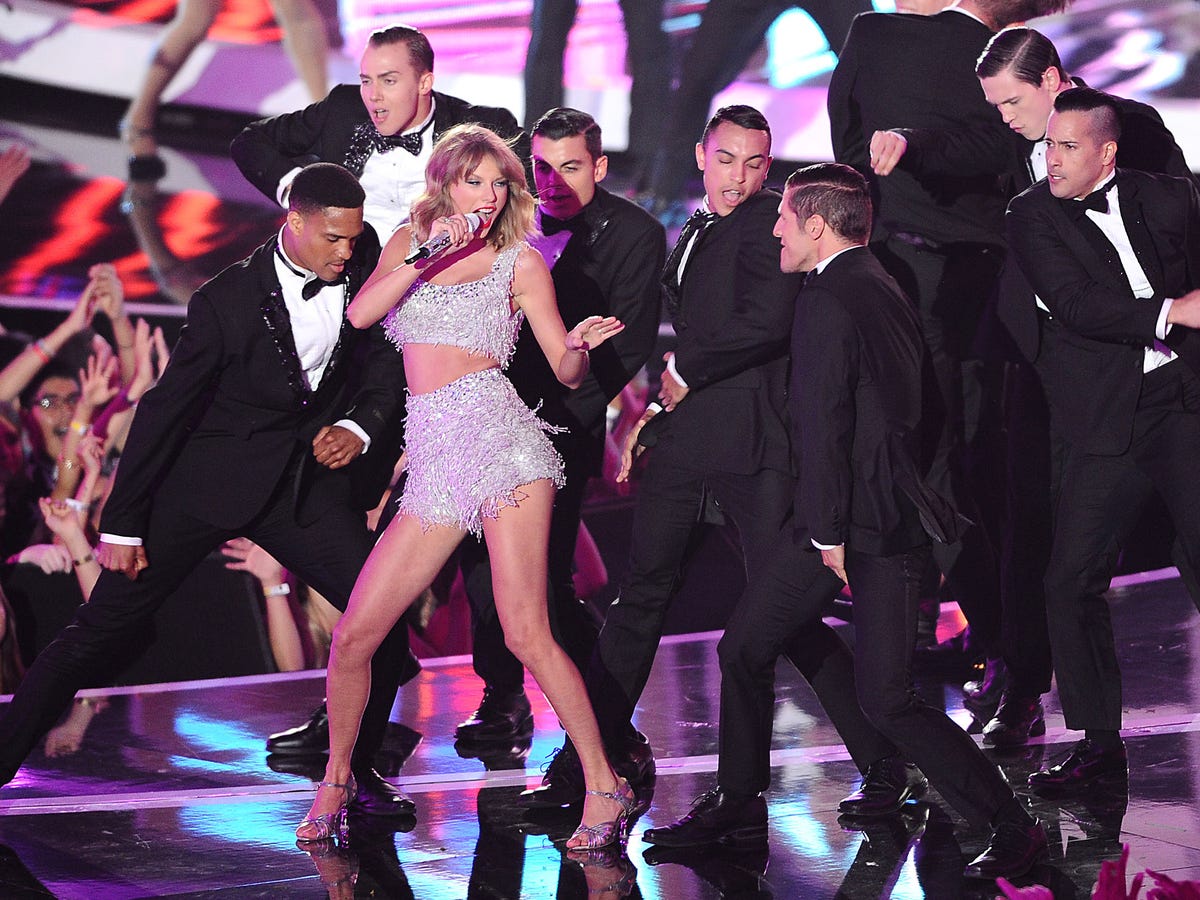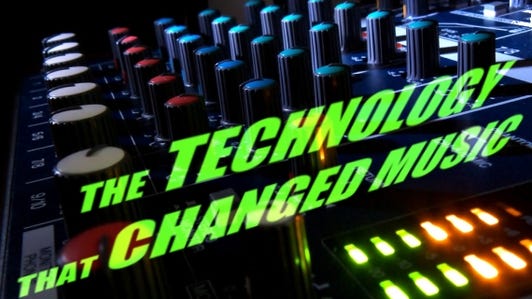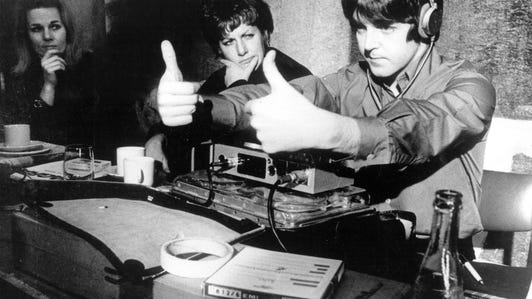
Jason LaVeris/FilmMagic
Thom Yorke, Taylor Swift and Jay Z may not like Spotify, but it seems that streaming could be the saviour of the recording industry after all.
“It’s been a rough ride for the recording industry. The pie has been getting smaller,” says Alex Jacob of the International Federation of the Phonographic Industry (IFPI), speaking at UK music industry conference The Great Escape 2015 in Brighton. But he believes that “after a steep decline in the early noughties the industry has stabilised…We’re in the early stage of building a business model around streaming subscription.”
The IFPI is a not-for-profit organisation that represents recording companies around the world. Each year it releases a report examining the performance of the industry — and in this year’s report, released in April, digital revenues equalled revenues from physical media for the first time. Revenue from digital music grew as revenue from physical media fell, so they both brought in $6.9 billion, keeping overall revenue roughly stable after years of decline.
The remainder of the industry’s $15 billion in revenue came from other sources, including the small but growing area of “syncing”: licensing of music for film, TV, adverts and other uses.
From wax cylinders to Auto-Tune: The technology that changed music






“Streaming and physical media can coexist in a way physical and downloading couldn’t,” reckons Jacob. The change from physical media to downloading saw higher barriers: principally, Jacob explains, buying new kit — you had to replace your Discman with an iPod, your hi-fi with a computer. But when you switch between downloading your music and streaming it, there’s no new kit required — you just keep using your PC, laptop, iPod or smartphone.
But it’s not just the kit. “Downloading is essentially replicating physical,” continues Jacob. Fans want to own the music and that requires paying for it, so there’s less of a distinction between paying for an album on CD or as an MP3 than there is between buying music and what Jacob describes as “snacking” on a streaming service.
Full stream ahead
- Attention, artists: Streaming music is the inescapable future. Embrace it
- Taylor Swift is right about music, wrong about Spotify, says CEO Ek
- Spotify’s revenue soars, but growth comes at a cost, report says
- Apple asking for exclusive tunes to amp up Beats Music, report says
- Jay Z’s Tidal music service makes star-studded splash
This “snacking” is increasingly available in different forms, from the fun-size MTV Trax that gives you the hits on a play-as-you-go basis, to the gourmet buffets of services like Jay-Z’s Tidal, which charges a premium for better audio quality.
Jacob also draws a distinction between services that require a subscription to listen to music and those that don’t. Subscription services like Spotify bring in a massive $1.57 billion in revenue, while nonsubscription ad-supported services like online video platforms YouTube and DailyMotion are worth much less, just $641 million. YouTube and the like argue they don’t need to pay for the music they host because they’re just a platform for users to upload content, but as more and more music fans get their tunes from YouTube this is a bone of contention in the industry.
Different types of streaming are also useful in different markets. In emerging markets growth is coming from telecommunications companies bundling streaming subscriptions with phone deals, similar to the way Vodafone offers a Spotify subscription as an incentive to sign up to a 4G contract.
Different countries have embraced streaming at different rates: the music buyers of Germany, for example, tend to be older, so physical media — and more traditional music like schlager — is still popular. In Japan, physical media is still huge in part because fans see CDs as merchandise and think nothing of buying multiple copies of an album for incentives like alternate artwork.
But in other areas the opportunities for growth are huge: the IFPI numbers show that digital music sales in Venezuela, for example, shot up 272 per cent in 2014. Peru and Colombia’s numbers almost doubled, at 96 per cent and 94 per cent respectively.
Looking at the global market, Jacob acknowledges that “we have a long way to go before we become a Norway or a Sweden”, countries where streaming has taken off in a huge way. “But we do think there are opportunities to start growing the music industry again in a sustainable way.”
However, the fragmentation of the music industry goes beyond a split between streaming and physical media. With revenues squeezed, artists have been forced to diversify and rely more on merchandise, live shows and other sources of income. Mark Meharry of Music Glue, which enables artists to sell digital content, merchandise and event tickets directly to fans, argues that Jacob’s assertion “is totally irrelevant to the modern artist. Streaming is just a replacement to radio and therefore a tool for market reach, not revenue stream. Emerging artists don’t care about the old world.”
Meharry points out the IFPI represents the interests of a long-standing record industry, and as such, “The IFPI could fall off the earth and nobody in our rapidly expanding world could care less.”




